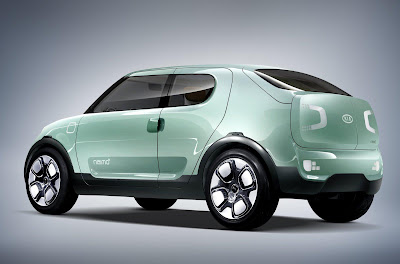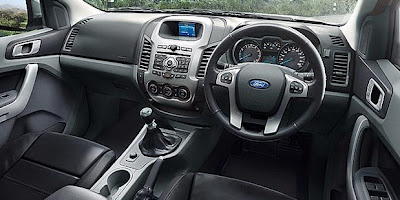
Auto industry executives are trying to make Silicon Valley engineers feel at home in Detroit. With a burgeoning number of technology job openings to fill, they're scouring Internet companies for workers, wining and dining applicants, and seeking promising students at schools such as Stanford University.
"We have a whole slew of job postings out there currently," said Doug VanDagens, director of Ford's connected service solutions, who has been trying to lure engineers to the automaker to design software. "We're just on a growth binge."
Expertise in cloud computing, mobile software applications and energy management are in demand in the Motor City as automakers replace car stereos with Internet radio and gasoline engines with motors powered by lithium-ion batteries. Technology job postings in the Detroit area doubled last year, making it the fastest-expanding region in the country, according to Dice Holdings Inc., a job-listing Web site.
"There's a war for talent out there, and it's only going to get worse," said Jim Bazner, vice president of human capital solutions at MSX International in suburban Detroit, which helps automakers find specialized employees. "There are hundreds of jobs, and all the automakers are hiring."
Dearth of graduates
Ford and General Motors Co. are rapidly hiring graduates from local universities as fast as they can -- there just aren't enough of them.
"If we filled every opening that's been posted or recruited just in the Lansing area, we'd be able to hire out all of our graduates three times over," said Garth Motschenbacher, who helps place computer-science graduates at Michigan State University. About 70 percent of the school's 54 students scheduled to graduate in May have jobs lined up, he said. "The number of students has not kept up with the opportunities."
Still, attracting engineers to Detroit rather than Silicon Valley can be a challenge. The San Francisco area is home to more technology companies offering more job openings than Detroit. California's mild climate and history of innovation are also a draw. Yet Detroit is bouncing back.
Companies that work with automakers on in-car entertainment systems, such as online streaming music providers Pandora Media Inc. and Mog Inc., have opened offices in the Detroit area. Google Inc., based in Mountain View, Calif., has an office in Birmingham, Mich., where it's looking for sales associates to work with the auto industry.
New wave
Marty Zacharias is part of the wave of new hires. The former Nissan Motor Co. and Ford employee joined Berkeley, Calif.-based Mog last month -- in its new Detroit office. He'll work directly with companies such as BMW AG's Mini and others to get Mog's Web-based subscription music service into vehicles.
"Many more Detroit-based automotive industry employees will follow a similar path to mine," Zacharias said in an e-mail, "or join advanced technology divisions within the established automotive companies."
The expansion has caught the eye of the U.S. Patent and Trademark Office, which announced in December that it will open its first satellite office in Detroit. The region's high percentage of scientists and engineers, as well as its patent output, spurred the decision, said Paul Fucito, a patent office spokesman. The 4,000 patents granted to Michigan in fiscal 2010 ranked seventh among U.S. states, he said. The facility is likely to create about 100 new jobs to review patent filings.
Recession's toll
One reason why the job growth in Detroit appears so high is because the recession's toll went so deep, said Tom Silver, senior vice president of Dice Holdings and author of the jobs report showing a surge in the area.
"The recovery there is actually looking pretty substantial, but it's also a reflection, to some extent, that Detroit was probably hit a little harder than the other markets," he said.
According to 2010 U.S. Census data released this week, the city of Detroit's population plunged 25 percent over the past decade to 713,777 residents, down from a peak of 1.85 million in 1950.
Michigan lost about 413,000 jobs from December 2007 through December 2009, including 83,200 jobs in the Detroit area, according to the U.S. Bureau of Labor Statistics.
Things picked up last year, as jobs in the Detroit-area professional and business-services sector, which include many of the tech jobs, rose almost twice as fast in December as the overall Michigan job market, according to the bureau.
Even with efforts to mimic Silicon Valley office culture, recruiting people to move from the West Coast to Detroit is difficult, said Micky Bly, GM's executive director of electric vehicles, battery and infotainment systems.
"I don't want to categorize it as an issue, but it is tough," he said. "You don't have people begging to come to the Michigan area."
Salary gap
Compensation is one reason why. While average salaries for Detroit technology jobs rose 2.3 percent last year to $71,445, that's still less than the national average of $79,384, and about 28 percent lower than the $99,028 paid in Silicon Valley, according to Dice Holdings. More than 940 technology jobs are currently available in the Detroit metro region, compared with more than 5,060 in Silicon Valley.
Still, Bly says the quality of life can be attractive for some. "They can get a whole lot of house in Michigan for what they can get in San Francisco," he said.
The workplace culture among automakers is also relaxing, as they attempt to adopt some of the perks more common at startups, like wearing jeans to work or telecommuting. That's a big change from when Bly started at GM 20 years ago, when everyone wore a collared shirt and a tie.
"The variation was in your pant color -- you could have gray, black or blue," Bly said. While things have changed, the perks still aren't the same as in Silicon Valley, he said.
"Do we have a free cafeteria like Google? No, but our stock isn't up to $400 a share yet," Bly said. Google currently trades at more than $575 a share, while GM's stock sits at $31. "When we get $400 a share, I'll make sure we have free meals for everyone here."












































